
Bee Scientific was founded in January 2012 by Cody Adams. He has been a hobbyist beekeeper for several decades and is enjoying a successful career in Information Systems Management as a Senior Software Ninjaneer. (No that's not really a word but it kind of sounds cool)
These two components of his life, combined with his love and appreciation for nature and the support of his family are the inspiration behind Bee Scientific - A call to action to utilize the miraculous technology we take for granted every day to help preserve a centuries-old custom and occupation of beekeeping for generations to come.
One fall weekend while living in California, Cody extracted over 300 pounds of honey from two "hobby hives" he kept in his back yard. A few days later, he was mowing his lawn and reflecting on how laborious the task of extraction had been. As he contemplated another year of honey production, he was inspired to consider the possibility that the process could be simplified and alternative methods designed to reduce the amount of time and energy required to harvest honey.
As time passed, bees and beekeepers alike began to suffer defeat. In the US alone it became common to hear stories of beekeepers losing their entire apiaries to conditions such as Colony Collapse Disorder (CCD). Bees started losing the ability to ward off disease. Mites became resistant to chemical treatments. Drought affected pollen and nectar sources. Costs began to rise and honey production began to decline. The plight of the bee quickly became an international concern.
With Cody's background in data collection, automation, and manufacturing, combined with his interest in all things electronically cool, and the fact that he is a Lego maniac and loves to build things, he decided that improvements to the harvesting process would not be enough. So he set out to identify ways to effectively change how beekeepers could manage their beehives and colonies. As concepts were discussed and ideas were sketched on everything from napkins to electronic CAD drawings, the likelihood of success began to manifest itself and with the encouragement of his father in the form of $87.00 to purchase wood to build the first prototypes, Cody filed for a provisional patent and built four 'bee barrels' which served as the initial test case to determine how well the bees would receive their living space and whether or not a radical change to the traditional beehive could be justified and accepted within the beekeeping community.
Stage I: Constructing The G1 (Woooden) Prototypes
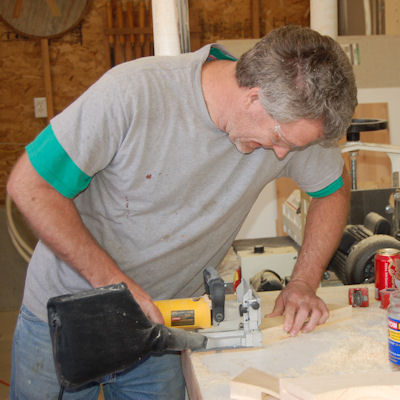

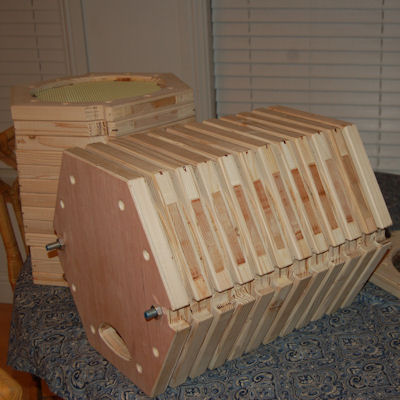
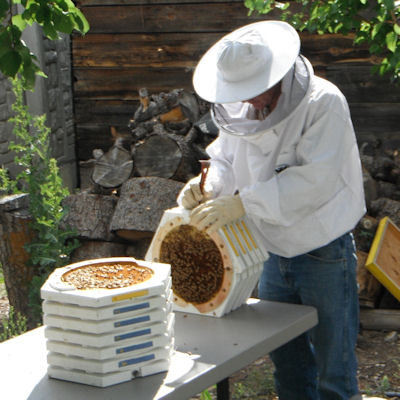
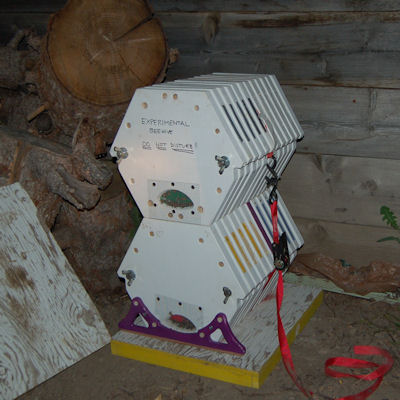

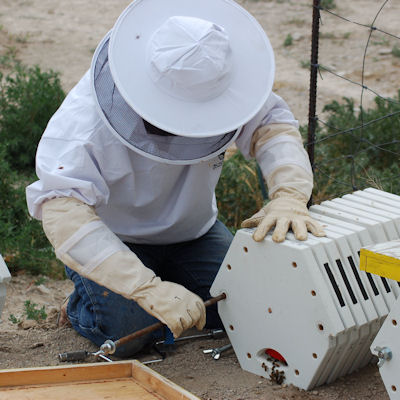
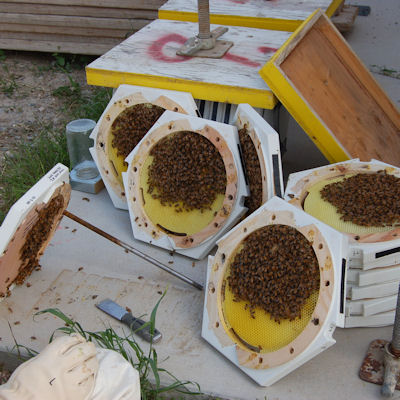
Cody's approach was to identify three primary objectives that would have to be met while developing new concepts and methods. First, the design must benefit the bees. Secondly, it must benefit beekeepers. And last but not least, it must benefit the scientific community.
As it turned out the rings allowed the bees to quickly draw honey comb and the queens started laying eggs almost immediately upon being introduced into the hive. The built-in bee feeder at the back of the barrel provided the bees with the nutrients they needed in the early spring while they waited for the flowers to arrive. Burr comb was virtually non-existent and there was absolutely no frame breakage or comb damage during inspections!
Overall, the bees and Cody's Bee Barrel design exceeded all expectations in the prototype hives as the evidence showed that the mandated objectives could be met. Cody decided that the results were good enough to take things to the next level and started working towards a reliable product that could be sold to hobby and commercial beekeepers. He has since organized his business and drawn up plans to raise capital to pay for the equipment that will be required to manufacture the Bee Barrels.
Bee Scientific was officially organized as an Utah-based LLC in October of 2014.
